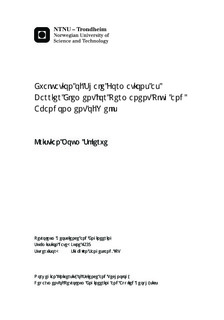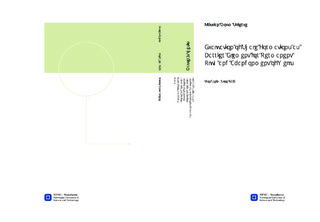| dc.description.abstract | In a similar fashion to the commonly used saying ?that the only thing certain in life is death?, the only thing certain for petroleum wells is that sooner or later the wells will have to be permanently plugged and abandoned. Permanent plug and abandonment (PP&A) is ideally performed by setting a number of cement plugs inside the casing strings. This technique is however only allowed if the casing strings are supported on the outside by a sealing material with sufficient quality over a required interval. When planning PP&A operations several operators have discovered that the annular seal, traditionally provided by annular cement, does not fulfil the abandonment requirements. The operators are thus left with a shortage of annular barriers and costly remedial cementing, milling or cut and pull of casing has to be performed in order to plug and abandon the well.
Traditionally, PP&A has been seen as sunk cost with little possible economic upside. However, today as many of the large producing fields on the Norwegian Continental Shelf (NCS) are simultaneously approaching the end of their lifetime, a large wave of PP&A jobs is imminent. As a consequence of the increased relevance, to improve the efficiency and reduce the cost of the operation several new methods, materials and procedures related to all parts of the PP&A operation have been developed.
One of these newly developed methods is to use inward moving shale formations as the annular sealing material in cases where the casing cement has failed. Up to now the presence of such barriers has been quite sporadic and their usefulness merely limited to some locations. This thesis has evaluated the potential of these barriers alone or in combination with other sealing materials to create the desired annular seal on a larger scale.
The main conclusion is that most shales at least have the potential to seal off parts of the annular gap between the formation and casing within the time frame of PP&A. Whether or not the full gap is closed is dependent on the shales flexibility and creep rates. In general Smectite rich shales found between 2000-3000meters appears to be the most suitable for becoming annular barriers. Useful indicators of a shales creep potential are clay content and stiffness. The two most efficient ways in increasing the chance for shales providing an annular barrier is exposing the formation to cations with small hydrated diameter or reducing the annular gap. The latter could be obtained through increasing the casing size or through an annular fill material. Laboratory test shows that compressed barite in combination with only water does not constitute a good sealing material. Thus, unless some additives are added, settled barite could not make up the above-mentioned fill material. Compressed micro-barite on the other hand appears to form a practically impermeable seal and the material could therefore in combination with inward moving formations make up the required annular barrier element.
However, the material has challenges when it comes to placement. Further work should therefore be focused on how this could be performed or alternatively on identifying other more ideal fill materials. Barite in combination with oil-water emulsions, diesel or barite mixed with small, soft and non-degradable particles may provide good solutions. | |

